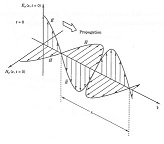This repository contains code for analyzing industrial wireless sounder measurements and the generation of wireless scenarios.
** NOTICE ** If you use or extend this code, please cite our work using the following citation. https://doi.org/10.18434/T4359D
DISCLAIMER: Certain tools, commercial equipment, instruments, or materials are identified in this repository in order to specify the experimental procedure adequately. Such identification is not intended to imply recommendation or endorsement by NIST, nor is it intended to imply that the materials or equipment identified are necessarily the best available for the purpose.
- meas_analysis: Includes files for analyzing RF Sounder measurements of various factories. Data may be found at http://doi.org/10.18434/T44S3N
- tap_reduction: Library for generating an N-sampled impulse response for RF channel emulator integration
- www_scripts: Python scripts used to generate file listings used by the www data landing page
MATLAB computer code used for the analysis of RF propagation measurement data.
Analysis includes the following:
- Gain versus Distance
- Line-of-sight versus Non-Line-of-Sight
- Rician K-factor
- First andnSecond Order delay spread
- Figure production for publication
- Statistical approximations
- Tabulation of results
The main M code entry point is estimate_channel_cwd.m for processing of NIST channel impulse response MAT files Use the file analyze_cwd.m for an example of calling estimate_channel_cwd.m.
>> estimate_channel_cwd('*.mat',[1;1;1;1;0;1]);
This will process each of the identified MAT files in the current working directory. Output of the procssing will include the following:
- channel stats: MAT files located in the stats folder that includes output of processing
- fig: MATLAB figures produced by the analysis
- png: publication quality figures
The file stats2rfnestdp.m is used to reduce average impulse responses to usable size within our testbed. The following command will convert the average channel impulse responses stored in the stat.mat files into 13-tap delay profile configuration files used by the RFNest D508/512.
stats2rfnestdp( '*_stats.mat', '.', '..\..\emu' )
RFNest is the current emulation platform in use by NIST Industrial Wireless project. It provides the capability of reproducing a 4 ns resolution tap-delay response for each link in an N*(N-1) mesh network at a 250 MHz sample rate.
Code used for the generation of the NIST Technical Report XYZW latex-based report. Reporting code includes the following:
- Figure production for publication
- Statistical approximations
- Tabulation of results into Latex tables
- Automation of full latex-based reporting
To initiate generation of the report, MAT files must first be processed using estimate_channel_cwd.m. Afterward, change directory to the stats folder and run the following commands.
reporting.makeStatsSummary('stats.dat','*_stats.mat'); % builds the summary channel statisticas
reporting.summarizeStatsFile(); % tabulates statistics into latex tables
reporting.makeLatexFigReport(); % produces a latex sub-report tex file for detailed analysis of measurements
Main author: Rick Candell, NIST
https://www.nist.gov/programs-projects/wireless-systems-industrial-environments
